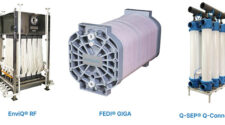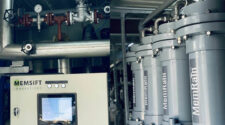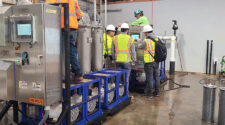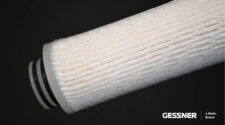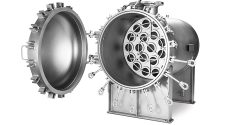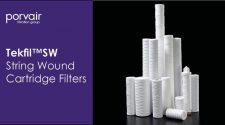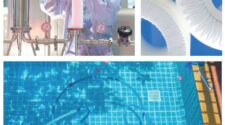March/April 2014 | Volume 33, No. 2
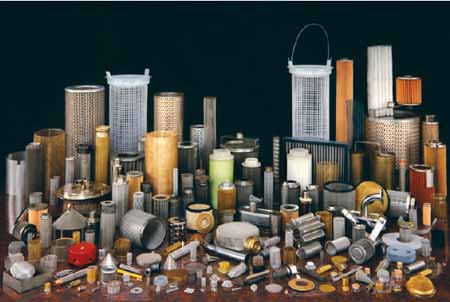
Every year businesses lose thousands and thousands of dollars because their hydraulic systems are not filtered adequately or they lack a pro-active maintenance plan. Think about it. Eighty percent of all system downtime is due to contamination, so why wait until you are in a crisis conducting emergency breakdown maintenance to think about filtration?
A typical hydraulic system has five areas in which some sort of filtration device should be placed. Let’s take a look at each of them.
THE SUCTION LINE
At all costs, you must protect the pump! After all, the pump is the heart of the system. When the human heart stops, the body breaks down and sometimes quits. Similarly, if the pump breaks down, the entire system breaks down, so it makes logical sense to protect it.
The most important thing to prevent is having the suction line become too restrictive. If this occurs, it could cause the pump to cavitate, creating an entirely new set of problems. Simple straining is the solution. What follows are some rules of thumb for selecting the filtration level to protect three types of pumpsÔÇöpiston, vane, and gear.
In a piston pump, whether a low- or high-pressure system (250-500 psi; 1,000-2,000 psi), the suction strainer should generally be 149 or 74 micron, respectively. In a vane pump (low- or high-pressure system; 250-500 psi; 1,000-5,000 psi), straining should be 238 or 149 micron, respectively. And in a gear pump (low- or high-pressure system; 250-500 psi; 1,000-3,000 psi), straining should be 595 or 149 micron, respectively.
THE PRESSURE LINE
Particulates that are not caught by the suction strainer are ground up by the pump, creating an increased number of smaller particulates. Therefore, a filter needs to be installed in the pressure line approaching actuation.
The actuator is the device that controls the mechanism (a piston, a wheel, a lever, or other mechanical apparatus). It performs the work and therefore this is where the highest level of filtration in the system should be.
Different applications require different levels of filtration. In a typical hydraulic system, filtration in the pressure line could be filtered down to 3 micron. When determining how fine the level of filtration should be for your system, don’t ask, “How clean can I get the fluid?”, but instead ask, “How dirty can the fluid be and still get the job done efficiently?”
THE RETURN LINE
The return line is the last line of defense before the fluid goes back to the reservoir to be used all over again. The return line catches the contamination that has been created by the movement of the system’s components. Therefore, some sort of filtration device should be installed between the actuation and the reservoir. Here the level of filtration should generally be between 3 and 25 micron.
Sometimes, when the flow back to the reservoir moves quickly, a return line diffuser is used. If the return flow is too fast, the fluid returning to the reservoir can cause minute bubbles to form. A diffuser installed on the return line will slow down the speed of the fluid, usually preventing foaming. If these bubbles make their way into the suction line and then into the pump, the pump could be irreparably damaged. However, good system design and baffles placed in the reservoir usually will prevent the chances of this from occurring.
RESERVOIR BREATHER
The main function of a reservoir is to store hydraulic fluid and supply it to the system. Most reservoirs need to breathe. Therefore, a vented tank breather is installed on the top surface of the reservoir to accommodate the air exchange that results from the constant change in the oil level, pressure, and temperature inside. Air carries contaminants. Just as hydraulic fluid filters and strainers clean the oil, breather units clean the air. The tank breather needs to be serviced just as the fluid filters do.
The second most damaging type of system contamination is water moisture. Everyone knows that water and oil don’t mix. As a reservoir breathes, much like the lungs of the human body do, atmospheric air passes in and out of it. If humidity is in the air, moisture is going to enter the system. Water in oil can increase the oxidation rate by more than ten times. A desiccant tank breather is ideal for preventing both moisture and particulates from entering the reservoir through the air.
OFF-LINE FILTRATION
In all systems, fluid needs to be periodically replaced or replenished. Reservoir fluid levels must be maintained to insure good system operation. It may be surprising to learn that a drum of new oil is never really “clean.” In fact, it can have up to 186,000 ml of particulate in it, some as fine as 5 micron, unless it meets certain ISO cleanliness requirements. So, if new oil isn’t always clean, why introduce it into the system when there is a means to clean it beforehand?
The fifth location for filtration is referred to as “off-line filtration.” When new oil is introduced into the system, it should be transferred using a portable filtration device, such as a filter cart.
FINAL THOUGHTS
Filtration should never be taken for granted. For a system to operate at peak efficiency, it is of utmost importance to maximize fluid cleanliness. If the filtration breaks down, the system will too. The level of filtration at all points in a system should be dictated by the specific application itself. In addition, all filters should be sized properly to the system they serve. A good rule of thumb is to consider the fluid viscosity, flow rate, working pressure, and operating temperature. Also consider whether the pump is a vane, gear, or piston type, and whether the system is in operation continuously, intermittently, or
If you have questions concerning filtration, ask an expert for assistance. The degradation of hydraulic fluid can be greatly reduced through periodic sampling and testing, combined with proper lubrication and system maintenance. Controlling contamination and practicing good preventive maintenance will ultimately have a positive impact on your bottom line.


